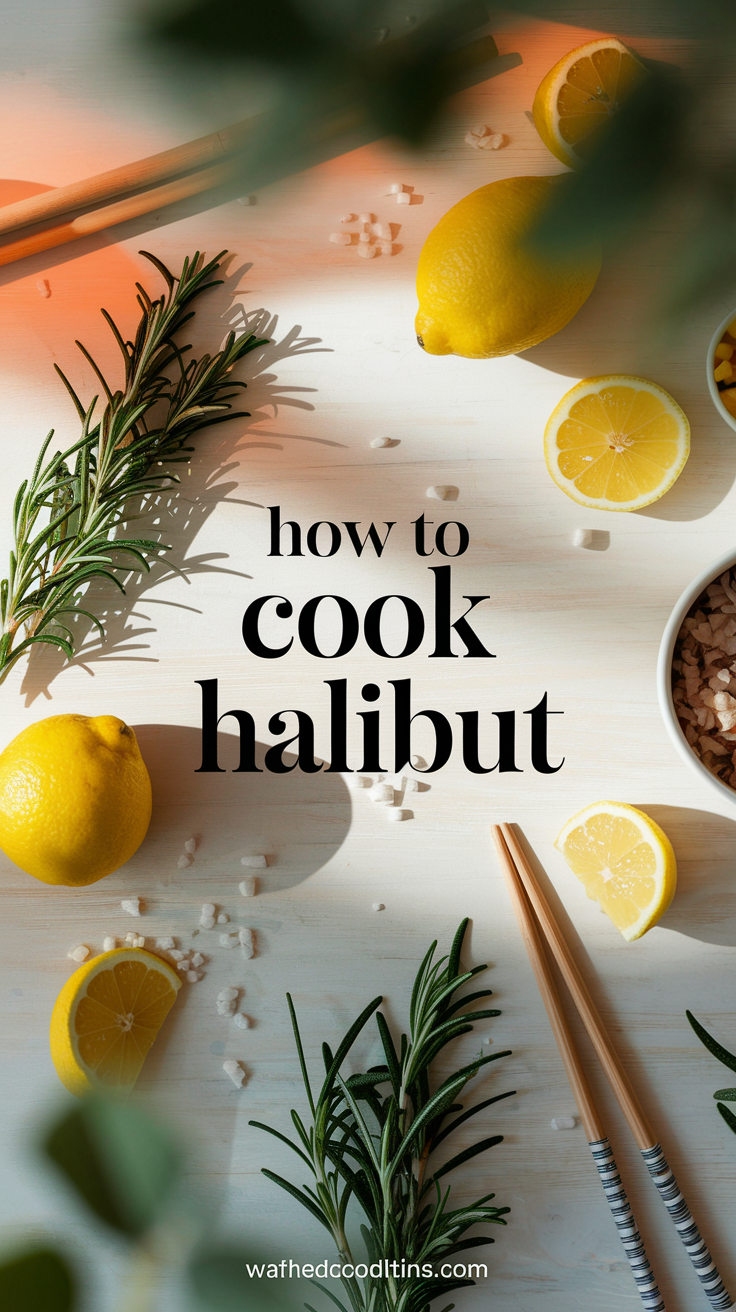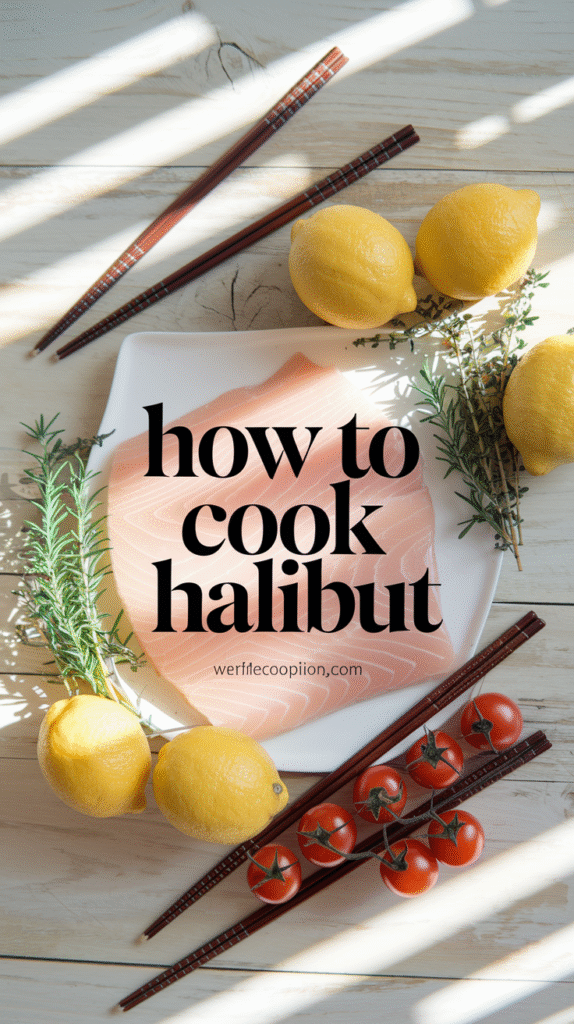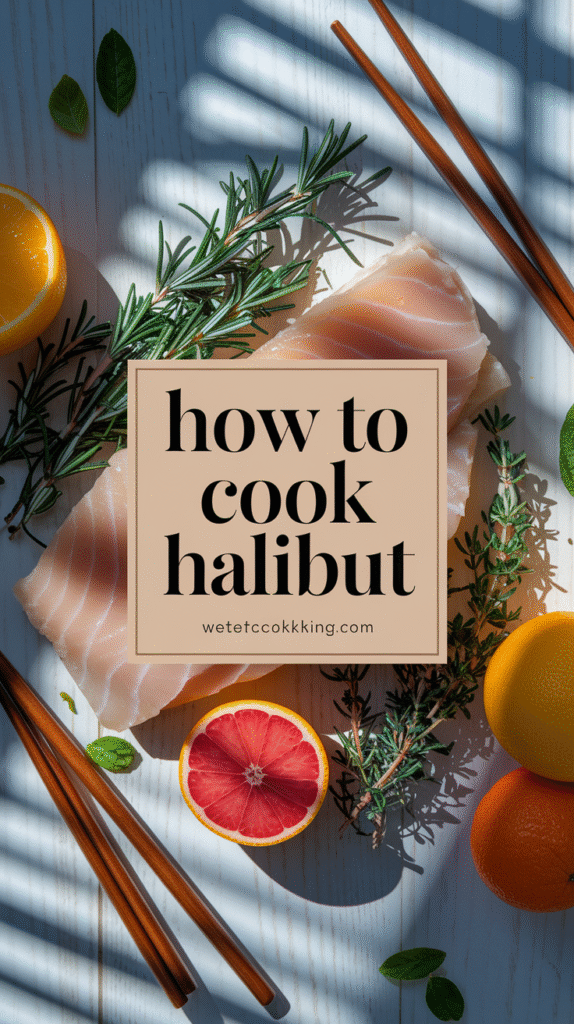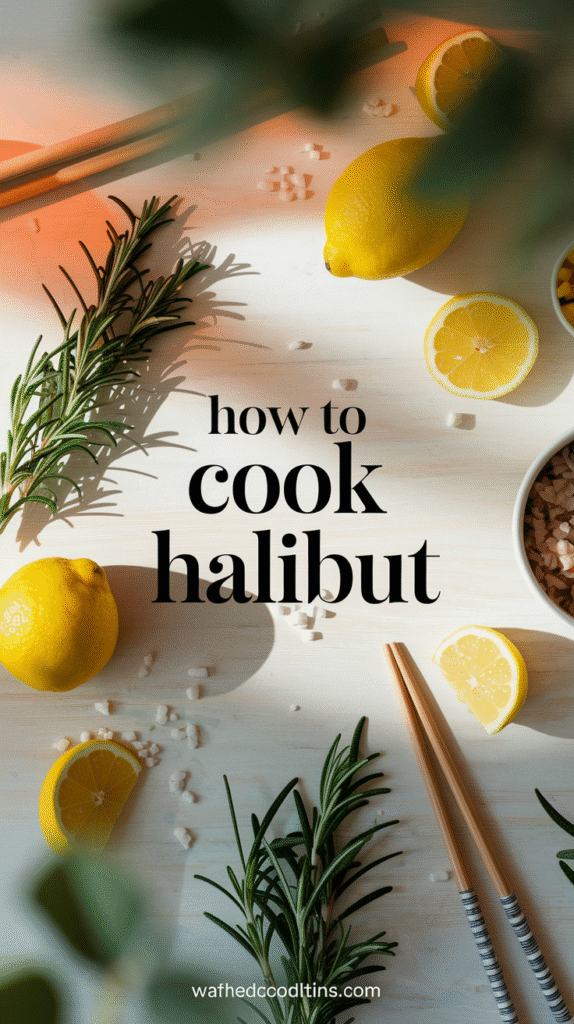Cooking halibut can yield delightful and healthy meals that you and your family will enjoy. This beautiful, mild-flavored fish is versatile and can be prepared in several delicious ways. Whether you prefer grilling, baking, pan-searing, or broiling, each method brings out the best in halibut, allowing its natural flavors to shine. Here are some enticing methods to cook halibut that you can easily try at home.
Grilling Halibut
Grilling halibut gives it a smoky flavor and a wonderful char. To grill halibut:
- Preheat your grill to medium-high heat.
- Brush the fish with olive oil and season with salt, pepper, and your favorite herbs.
- Place the halibut on the grill. Cook for about 4-5 minutes on each side, depending on thickness. The fish should be opaque and flake easily.
Grilled halibut pairs well with fresh lemon juice, giving it an excellent burst of flavor.
Baking Halibut
Baking is another effortless way to cook halibut while keeping it moist. This method is great for busy nights.
- Preheat your oven to 400°F (200°C).
- Place the halibut fillets in a baking dish. You can add herbs, garlic, and a splash of white wine or broth for added moisture.
- Bake for around 15-20 minutes, depending on thickness. Ensure the fish reaches an internal temperature of 145°F (63°C).
This method retains the fish’s natural juices and flavors, making it a tasty and healthy option.
Pan-Searing Halibut
Pan-searing provides a crispy exterior while keeping the inside tender and flaky. Here’s how to do it:
- Heat a skillet over medium-high heat and add oil.
- Season the halibut fillets with salt and pepper.
- Once the oil is hot, place the fish in the pan. Cook for around 4-5 minutes on one side until golden brown, then flip and cook for an additional 3-4 minutes.
For a burst of flavor, you can add a knob of butter and some fresh herbs during the last few minutes of cooking.
Broiling Halibut
Broiling is a fantastic way to achieve a crispy texture on the outside while keeping the inside juicy. Here’s a step-by-step guide:
- Preheat your broiler and place the oven rack about 6 inches from the heat source.
- Season halibut with salt, pepper, and any spices you prefer.
- Place the fish on a broiler-safe pan and broil for about 5-6 minutes on each side, depending on thickness.
This cooking method gives halibut a nice flavor while ensuring it cooks evenly.
Halibut Cooking Tips
To make the most of your halibut, keep these additional tips in mind:
- Always check for doneness using an instant-read thermometer; halibut should be 145°F (63°C).
- Marinating the fish for about 30 minutes can enhance its flavor significantly.
- Serve halibut with sides like roasted vegetables, quinoa, or a fresh salad for a well-rounded meal.
For more creative halibut recipes, check out Cooking Light and Food Network. These resources offer various cooking methods and flavor ideas to explore.
Experimenting with different cooking techniques will help you discover your favorite way to prepare halibut. Whether you grill, bake, pan-sear, or broil, halibut will surely become a fan favorite in your household. Enjoy the delightful flavors and health benefits that come with this versatile fish!
Nutritional Benefits of Halibut in Your Diet
Halibut is not just a delicious and versatile fish; it’s also packed with nutritional benefits that can enhance your diet. This flatfish is not only high in protein but also contains a wide range of vitamins and minerals that promote overall health. Let’s explore some of the key nutritional benefits of including halibut in your meals.
Protein Powerhouse
One of the standout features of halibut is its high protein content. A typical serving contains around 22 grams of protein per 3-ounce portion. Protein is essential for muscle growth and repair, making halibut an excellent choice for those looking to maintain or build muscle mass.
Rich in Omega-3 Fatty Acids
Halibut provides a healthy dose of omega-3 fatty acids, primarily EPA and DHA. These fatty acids are known for their anti-inflammatory properties and their ability to support heart health. Consuming omega-3s can lower blood pressure, reduce triglycerides, and may even decrease the risk of heart disease. Including halibut in your diet is a tasty way to make sure you’re getting these essential fats.
Vitamins and Minerals Galore
Beyond protein and omega-3s, halibut is rich in several vitamins and minerals, including:
- Vitamin D: Supports bone health and immune function.
- Vitamin B12: Vital for nerve function and the production of DNA and red blood cells.
- Selenium: An antioxidant that helps protect your cells and may improve thyroid function.
- Potassium: Essential for maintaining fluid balance and proper muscle function.
Low in Calories and Fat
If you’re watching your calorie intake, halibut is a great option. A 3-ounce serving contains about 140 calories and just 2 grams of fat. This makes it an ideal choice for those looking to lose weight or maintain a healthy lifestyle without sacrificing flavor in their meals.
Enhancing Your Diet
Halibut into your diet can be easy and enjoyable. Here are some ideas on how to prepare this fantastic fish:
- Grill: Brush with olive oil and season with your favorite herbs for a simple and delicious grilled halibut.
- Bake: Wrap halibut in parchment paper with vegetables and herbs, then bake for a healthy, low-mess meal.
- Pan-Seared: Cooking halibut in a hot skillet allows you to achieve a crispy exterior while keeping the fish moist inside.
Considerations When Choosing Halibut
When purchasing halibut, consider looking for sustainable options. Overfishing can impact halibut populations, so opting for fish sourced from responsible fisheries is important. You can find resources at the Monterey Bay Aquarium’s Seafood Watch to make informed choices.
Serving Suggestions & Recipes
Halibut’s mild flavor allows it to pair well with various cuisines. Here are some recipes that highlight halibut:
- Halibut Tacos: Serve grilled halibut in corn tortillas with mango salsa for a refreshing meal.
- Halibut Chowder: A creamy soup featuring halibut, potatoes, and corn, perfect for chilly days.
- Halibut Salad: Flake cooked halibut over mixed greens with a citrus dressing for a light lunch or dinner option.
Nutritional Comparison
Here’s a table showcasing the key nutritional content of halibut compared to other popular fish:
| Fish Type | Calories (per 3 oz) | Protein (grams) | Omega-3 (grams) |
|---|---|---|---|
| Halibut | 140 | 22 | 0.5 |
| Salmon | 175 | 23 | 1.5 |
| Tilapia | 110 | 22 | 0.1 |
As you can see, halibut offers a balance of low calories and high protein with reasonable omega-3 fatty acids, making it an excellent choice for a healthy diet. By incorporating halibut into your meals, you’re not only treating yourself to a delightful dish but also promoting your well-being.
For more culinary inspiration and information about seafood, visit Seafood Nutrition Partnership.
Flavor Pairings: Best Ingredients to Use with Halibut
Halibut is a mild, flaky fish that offers a delightful canvas for a range of flavors. Its subtle taste allows it to pair wonderfully with various ingredients, making it a favorite among chefs and home cooks alike. To enhance your halibut dishes, consider these flavor pairings that will elevate your culinary experience.
Herbs and Spices
Using fresh herbs and spices is a fantastic way to infuse flavor into halibut. Here are some of the best options:
- Dill: This herb complements halibut beautifully, adding a fresh and slightly tangy note.
- Parsley: Its bright and fresh taste brings out the seafood flavor without overpowering it.
- Thyme: The earthy flavor of thyme pairs nicely, especially in roasted or baked dishes.
- Cilantro: Great in Mediterranean and Asian cuisines, cilantro adds a unique zing.
- Paprika: Adds a smoky depth, especially if you are grilling or roasting your fish.
Citrus and Acidity
Citrus fruits provide a zesty brightness that complements the richness of halibut. Consider these options:
- Lemon: A classic pairing, lemon juice or zest enhances the natural flavors of halibut.
- Lime: Perfect for a tropical twist, lime juice adds a refreshing quality.
- Orange: Gives a sweet contrast, especially when used in sauces or marinades.
- Vinegar: Balsamic or apple cider vinegar can add a tangy kick when used in dressings.
Fruits and Nut Components
Fruits can add sweetness, while nuts provide crunch and richness. Explore these pairings:
- Tomatoes: Whether fresh or in a salsa, tomatoes add acidity and sweetness that lifts halibut.
- Mango: A sweet fruit that works well in salsa, giving halibut a tropical flair.
- Avocado: Smooth and creamy, avocado can balance the dish with richness.
- Nuts: Almonds or pine nuts can add a crunchy texture and toasty flavor when sprinkled on top.
Complementary Sauces and Marinades
The right sauce can take your halibut from ordinary to extraordinary. Here are several that work particularly well:
- Chimichurri: An herb-based sauce that brings a burst of freshness and flavor.
- Beurre Blanc: A classic French sauce that adds a rich and creamy touch.
- Soy sauce: Gives an umami flavor, perfect in marinades or glazes.
- Mustard glaze: A tangy option that complements the fish’s mild flavor well.
Vegetable Pairings
Serving halibut with vegetables can make for a balanced meal. Consider these options:
- Asparagus: Roasted or grilled, asparagus pairs beautifully with the flakiness of halibut.
- Spinach: Sautéed spinach with garlic can serve as a flavorful bed for your fish.
- Bell Peppers: Sweet and colorful, they can be added to salsas or roasted alongside halibut.
- Zucchini: Grilled or sautéed, this vegetable adds a nice contrast in texture.
When thinking about how to cook halibut, consider these flavor pairings. They not only enhance taste but also create visually appealing dishes that are sure to impress. For more tips and recipes, explore resources like The Kitchn or Food Network.
By getting creative with these ingredients, you can transform your halibut meals into something truly special. Whether you choose to bake, grill, or pan-sear your halibut, these pairings will guide you towards a delicious and unforgettable dish.
Common Mistakes to Avoid When Cooking Halibut
Cooking halibut can be a delightful experience, but it’s not without its challenges. Many home cooks make common mistakes that can lead to unsatisfactory results. Knowing what to avoid can significantly enhance your dish and make your halibut both flavorful and beautifully presented.
Not Preparing the Halibut Properly
Begin with fresh halibut. Before you cook, it’s crucial to check its texture and smell. Fresh halibut should have a mild scent and firm texture. If it feels slimy or has a strong fishy smell, it’s best not to use it.
Another mistake is not allowing the fish to come to room temperature before cooking. Taking halibut straight from the refrigerator can create uneven cooking. Let it sit on the counter for about 15-20 minutes prior to cooking for better results.
Using The Wrong Cooking Method
Halibut is a versatile fish that can be grilled, broiled, baked, or pan-seared. However, not all methods suit this delicate fish. A common mistake is using methods that might dry it out, such as overcooking or grilling at too high a temperature. Here’s a quick guide to different cooking methods:
| Cooking Method | Best Temperature (°F) |
|---|---|
| Grilling | 350-400 |
| Broiling | 450 |
| Baking | 375-400 |
| Pan-searing | 375 |
Overseasoning the Fish
Halibut has a mild flavor that can be easily overshadowed by heavy seasonings. A frequent error is drowning it in spices or sauces. Instead, opt for simple seasonings that highlight the natural taste of the fish. A little sea salt, pepper, and a squeeze of lemon typically do the trick.
Ignoring Cooking Time
Cooking time is critical for halibut. It can cook quickly, and overcooking it results in dry, rubbery fish. A general rule of thumb is to cook halibut for about 10 minutes per inch of thickness. Here’s a quick reference:
- ½ inch thick: 5-7 minutes
- 1 inch thick: 10-12 minutes
- 1½ inch thick: 15-20 minutes
Always use a meat thermometer to check doneness. The internal temperature should reach 145°F when fully cooked.
Neglecting the Resting Time
After cooking, let the halibut rest for a few minutes before serving. This step allows the juices to redistribute and ensures a moist, tender bite. Cutting into it right away may cause the juices to run out, leading to a drier piece of fish.
Choosing the Wrong Side Dishes
Pairing halibut with the right side dishes can elevate your meal. However, a mistake many people make is choosing overpowering or heavy sides. Light, bright flavors are ideal. Consider options like:
- Grilled vegetables
- Quinoa or brown rice
- Fresh salads with citrus vinaigrettes
These complementary sides will let the halibut shine while adding nourishing elements to your meal.
Not Practicing Proper Kitchen Hygiene
Ensure a safe cooking environment is crucial. A frequent mistake is not washing your hands, utensils, and surfaces after handling raw fish. Cross-contamination can lead to foodborne illnesses. Always follow food safety guidelines when cooking any seafood.
For more recipes and tips on cooking halibut, you can visit Seafood Watch or check out cooking tutorials at AllRecipes.
By avoiding these common pitfalls, you can enjoy perfectly cooked halibut that is both delicious and impressive. Remember, cooking is about experimenting and learning from mistakes, so don’t be afraid to try new techniques and flavors!
Creative Halibut Recipes to Impress Your Guests
Halibut is a versatile and delicious fish that can elevate any dining experience. If you’re looking to impress your guests with creative halibut recipes, you’re in for a treat! Here are some unique methods to prepare halibut that are sure to wow your friends and family.
1. Grilled Halibut Tacos
Celebrate the vibrant flavors of summer with grilled halibut tacos. This dish combines fresh ingredients with a smoky taste that your guests will love.
- Ingredients:
- 1 pound halibut fillets
- 1 tsp chili powder
- 1 tsp cumin
- Salt and pepper to taste
- 8 corn tortillas
- 1 cup shredded cabbage
- Fresh cilantro, chopped
- Lime wedges for serving
- Instructions:
- Preheat your grill to medium-high heat.
- Season halibut fillets with chili powder, cumin, salt, and pepper.
- Grill for about 4-5 minutes on each side until the fish is cooked through.
- Warm the corn tortillas on the grill.
- Assemble tacos with grilled halibut, shredded cabbage, and cilantro.
- Squeeze lime juice over the top and serve immediately.
2. Baked Halibut with Lemon and Herbs
This baked halibut recipe is simple yet flavorful, making it a perfect dish for a dinner party. The combination of lemon and fresh herbs brings out the natural taste of the fish.
- Ingredients:
- 1 pound halibut fillets
- 2 tablespoons olive oil
- Juice of 1 lemon
- 1 tbsp fresh dill, chopped
- 1 tbsp fresh parsley, chopped
- Salt and pepper to taste
- Instructions:
- Preheat your oven to 375°F (190°C).
- In a baking dish, sprinkle halibut with salt, pepper, and fresh herbs.
- Drizzle with olive oil and lemon juice.
- Bake for 15-20 minutes until the fish flakes easily with a fork.
3. Halibut Cakes
These halibut cakes are a fantastic appetizer that showcases the fish in a new and exciting way. They are crispy on the outside and tender on the inside.
- Ingredients:
- 1 pound cooked halibut, flaked
- 1/2 cup breadcrumbs
- 1/4 cup mayonnaise
- 1 egg, beaten
- 1 tsp Old Bay seasoning
- 2 green onions, chopped
- Oil for frying
- Instructions:
- In a bowl, mix flaked halibut, breadcrumbs, mayonnaise, beaten egg, Old Bay seasoning, and green onions.
- Form the mixture into small patties.
- Heat oil in a skillet over medium heat and fry the cakes for about 3-4 minutes per side until golden brown.
- Serve with a tangy dipping sauce.
4. Halibut En Papillote
Cooking halibut en papillote offers a dramatic presentation that’s bound to impress. The fish steams in its own juices, keeping it moist and flavorful.
- Ingredients:
- 1 pound halibut fillets
- 1 zucchini, thinly sliced
- 1 red bell pepper, sliced
- 1 lemon, sliced
- Salt and pepper to taste
- Parchment paper for wrapping
- Instructions:
- Preheat your oven to 400°F (200°C).
- Lay halibut fillet on the parchment paper and season with salt and pepper.
- Top with zucchini, bell pepper, and lemon slices.
- Fold the parchment to seal the fish inside.
- Bake for 20-25 minutes until the fish is cooked through.
These creative halibut recipes will not only please your palate but will also be a great conversation starter at your dinner table. For more seafood inspiration, check out Food Network Halibut Recipes for a wide variety of options! Enjoy your culinary adventure!
For those looking to dive deeper into halibut cooking techniques, visit Serious Eats for expert tips and tricks that will help you perfect your dishes.
Conclusion
Cooking halibut can be a delightful culinary adventure when approached with the right methods and an understanding of its unique characteristics. Each cooking method, whether grilling, baking, or pan-searing, brings out the delicate flavor and flaky texture of this delicious fish. halibut into your meals not only tantalizes the taste buds but also enhances your diet with its numerous nutritional benefits, including high protein content and essential omega-3 fatty acids.
Pairing halibut with complementary ingredients, such as citrus, herbs, and various spices, elevates its flavor profile, making any dish a standout. When crafting your halibut meals, it’s crucial to steer clear of common pitfalls, such as overcooking or using overly strong seasonings, which can overwhelm its natural taste. Instead, aim for balance to let halibut shine.
Exploring creative halibut recipes can impress your guests and elevate your dining experience. Whether you’re preparing a simple grilled halibut dish with a refreshing mango salsa or a more complex halibut en papillote with seasonal vegetables, the versatility of this fish opens the door to countless possibilities.
Embracing the culinary journey with halibut not only satisfies your palate but also nourishes your body. As you explore different methods, flavors, and recipes, you’ll discover that cooking halibut is not just about the food; it’s about creating memorable experiences around the table with friends and family. So go ahead and start experimenting with halibut today—your taste buds will thank you!







Leave a Reply